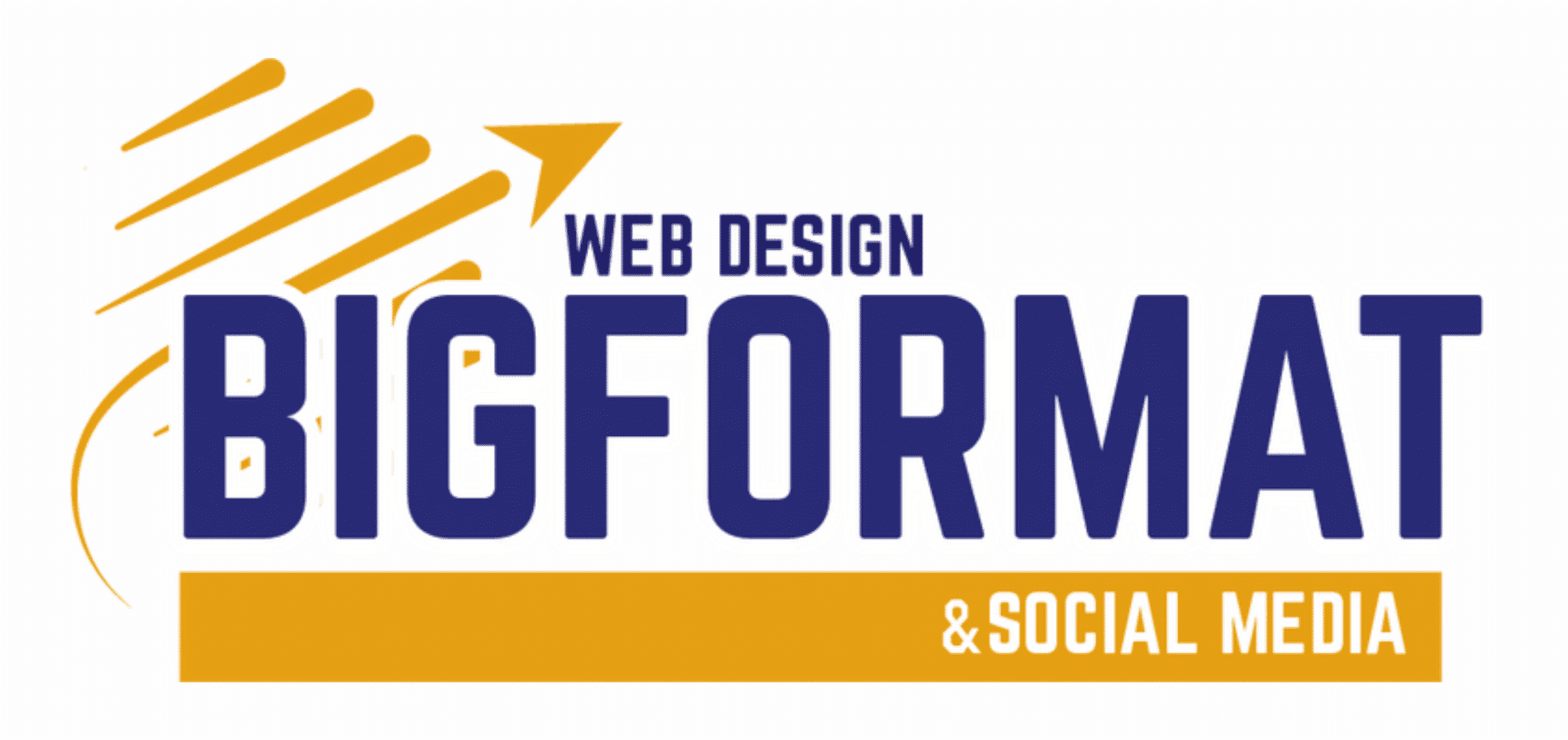Bigformat-Web design and Social media
Web Design Tips From Web Design Experts
A website serves as the digital face of your brand, and even the slightest design detail can influence whether a visitor becomes a loyal customer or quickly clicks away.
Your website shapes an astounding 94% of the initial impression a potential customer has of your trustworthiness. It is crucial to get the design right—everything from the layout and visuals to functionality matters in creating a seamless user experience (UX) and user interface (UI).
At Big Format, our award-winning web designers have compiled their best tips to help you design a website that resonates with your audience. Alongside the essentials, we’ll also outline common mistakes to avoid. Whether you’re a business owner, a designer, or someone looking to optimize their website, these insights will guide you.
Web Design Tips for UI
User interface (UI) refers to the visual and interactive components users engage with while navigating your website. A well-designed UI ensures users can interact with your site seamlessly and intuitively.
1. Apply Visual Consistency
Consistency is key to creating a professional-looking website that feels cohesive. Here’s how to maintain visual harmony:
Limited color palette: Stick to a few colors (3-5) and use them consistently. For example, use your brand’s primary color for buttons and highlights.
Typography: Select up to three fonts for headings, subheadings, and body text. This avoids clutter and maintains readability.
Image and icon style: Ensure all visuals align with your brand. Whether minimalist or vibrant, keep it uniform across pages.
UI elements: Buttons, forms, and tabs should have the same style throughout the website to maintain familiarity for users.
2. Keep It Simple
Simplicity removes distractions, making it easier for visitors to navigate your site. Achieve simplicity by:
Highlighting essential elements like CTAs and section headings.
Using clean layouts and avoiding unnecessary animations or pop-ups.
Simplifying navigation paths—users should never have to think twice about where to click next.
3. Design With Hierarchy in Mind
Visual hierarchy organizes your content to guide users toward important elements. Use these techniques:
Contrast and color: Highlight key CTAs or headlines with bold colors.
Size and placement: Make important elements larger and position them prominently.
Grouping related items: For instance, place product details and pricing in proximity.
4. Leverage Grid Systems
Grid systems structure your layout into rows and columns, ensuring balance and alignment. A responsive grid is vital for mobile-friendliness and a clean design.
Use the rule of thirds to position critical elements for maximum visual appeal.
5. Opt for Mobile-First Design
With 60% of internet traffic originating from mobile devices, designing for smaller screens first ensures you meet modern user demands.
Simplify navigation for touch screens and ensure text is easily readable without zooming.
Test your design on multiple devices to guarantee responsiveness
Web Design Tips for UX
User experience (UX) focuses on how users feel when navigating your site. A positive UX ensures visitors find value and ease in their interactions.
1. Create Intuitive Navigation
Navigation should act as a map, guiding users to desired information effortlessly.
Use simple and clear labels for menus and buttons.
Implement breadcrumbs and search bars for easy navigation.
Test navigation with real users to identify bottlenecks.
2. Ensure Fast Loading Times
Did you know that 53% of users abandon a site if it takes more than 3 seconds to load? Speed matters!
Optimize images and videos to reduce file sizes.
Use caching and a content delivery network (CDN) to improve load times.
3. Prioritize Accessibility
Make your site accessible to all users, including those with disabilities.
Add alt text to images for screen readers.
Ensure your site is keyboard-navigable.
Use high-contrast colors for better readability.
4. Provide Feedback Mechanisms
Interactive elements like forms and buttons should offer feedback, such as a confirmation message or animation, so users know their actions were successful.
Web Design Tips for Branding Consistency
Your website should reflect your brand’s identity across all its elements to create a memorable experience.
1. Maintain Brand Colors and Logo Placement
Position your logo prominently in the header and link it to your homepage.
Use your brand’s primary colors consistently for key elements like buttons and headings.
2. Use Consistent Messaging
Ensure the tone of voice and terminology aligns with your overall brand personality.
3. Design for Cross-Platform Consistency
Your website, email campaigns, and social media should all have a similar look and feel.
Common Web Design Mistakes to Avoid
Even minor oversights can lead to user frustration. Here are the top mistakes to sidestep:
1. Overloading with Features
A cluttered website overwhelms visitors. Focus on simplicity and functionality.
2. Ignoring Mobile Users
Failing to optimize for mobile can alienate a large segment of your audience.
3. Slow Page Load Times
Uncompressed media files and poorly written code often slow sites down, negatively impacting SEO and user experience.
4. Poor Readability
Avoid fonts that are too small or colors with low contrast.
Break up large text blocks into smaller, scannable paragraphs.
5. Neglecting Call-to-Action Buttons
CTAs drive conversions. If they’re poorly designed or hidden, you’re losing opportunities.
Custom Web Design Services at Big Format
At Big Format, we specialize in crafting tailored websites that elevate your brand. From responsive layouts to seamless navigation, our team ensures your site excels in both UI and UX.
Whether you’re building a site from scratch or revamping an existing one, we bring expertise and creativity to every project.
Have a Custom Web Design Project? Let’s Talk!
Ready to create a website that stands out? Reach out to our experts for a consultation and see how we can transform your online presence.
By following these web design tips and avoiding common pitfalls, you’ll create a user-friendly, aesthetically pleasing website that supports your business goals.
Contact Big Format Today for expert web design solutions tailored to your brand’s needs!

